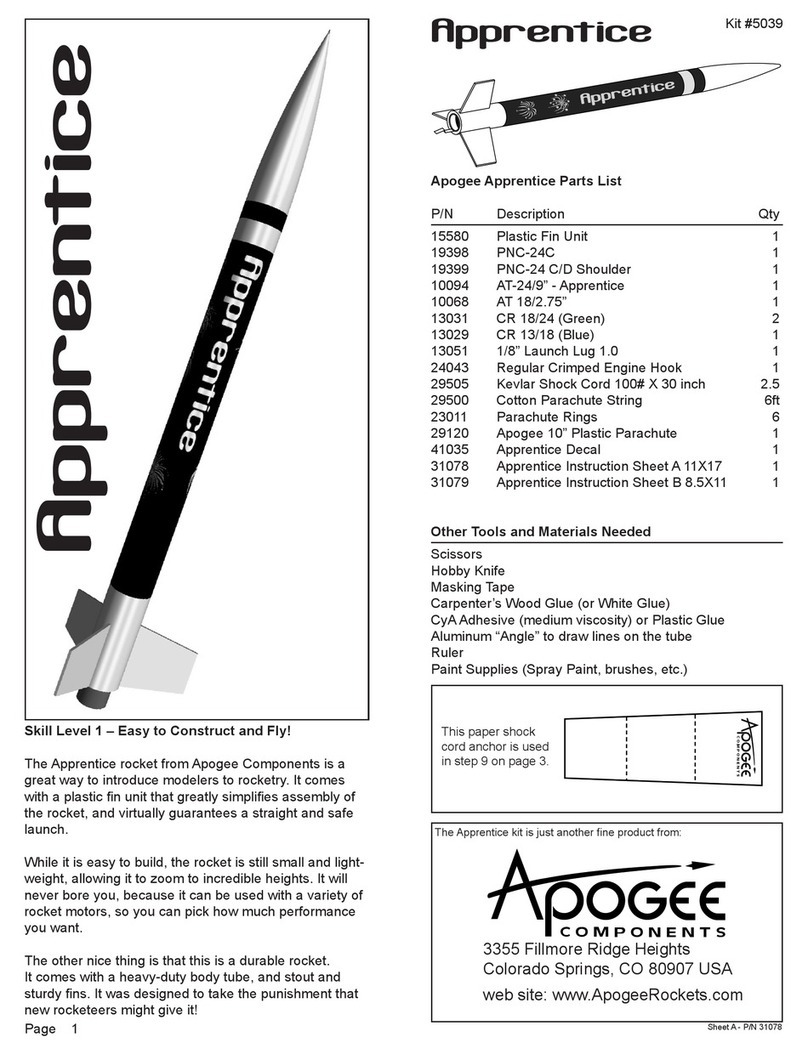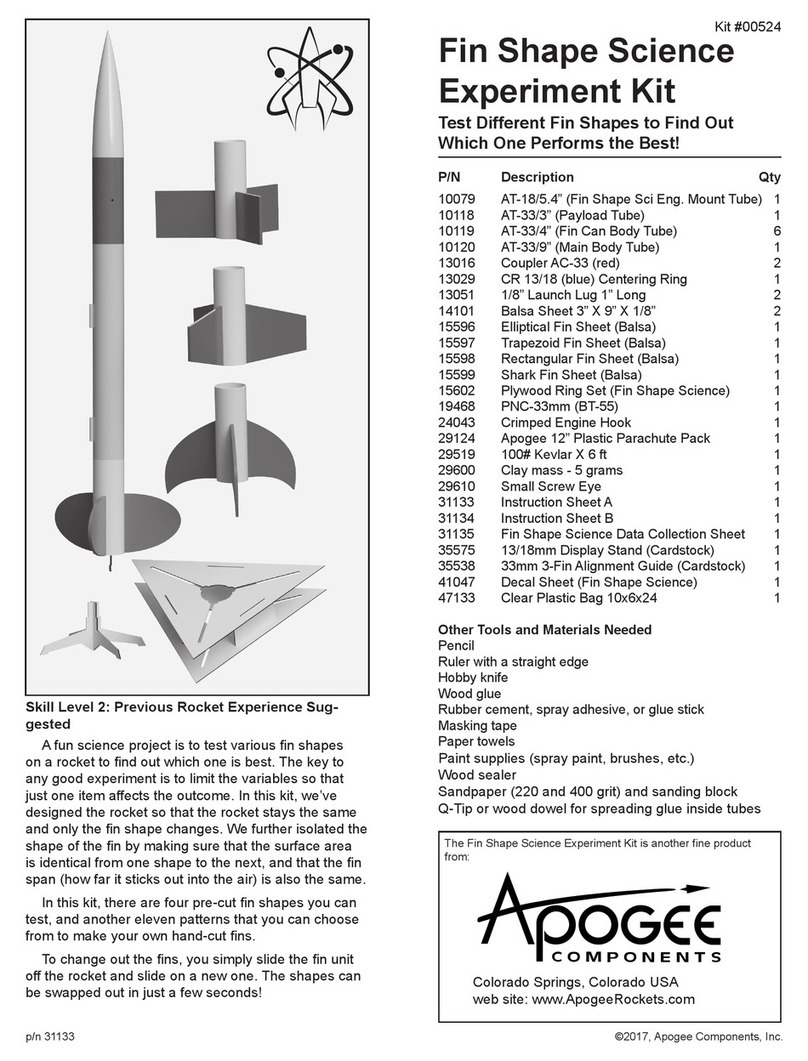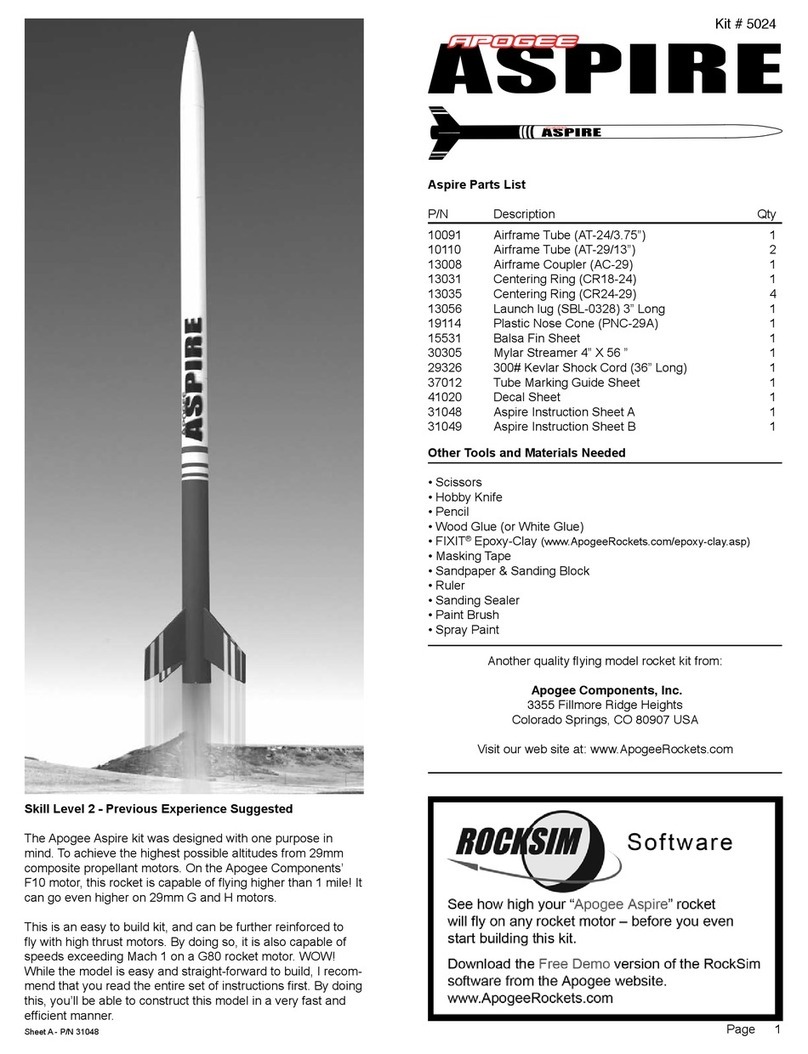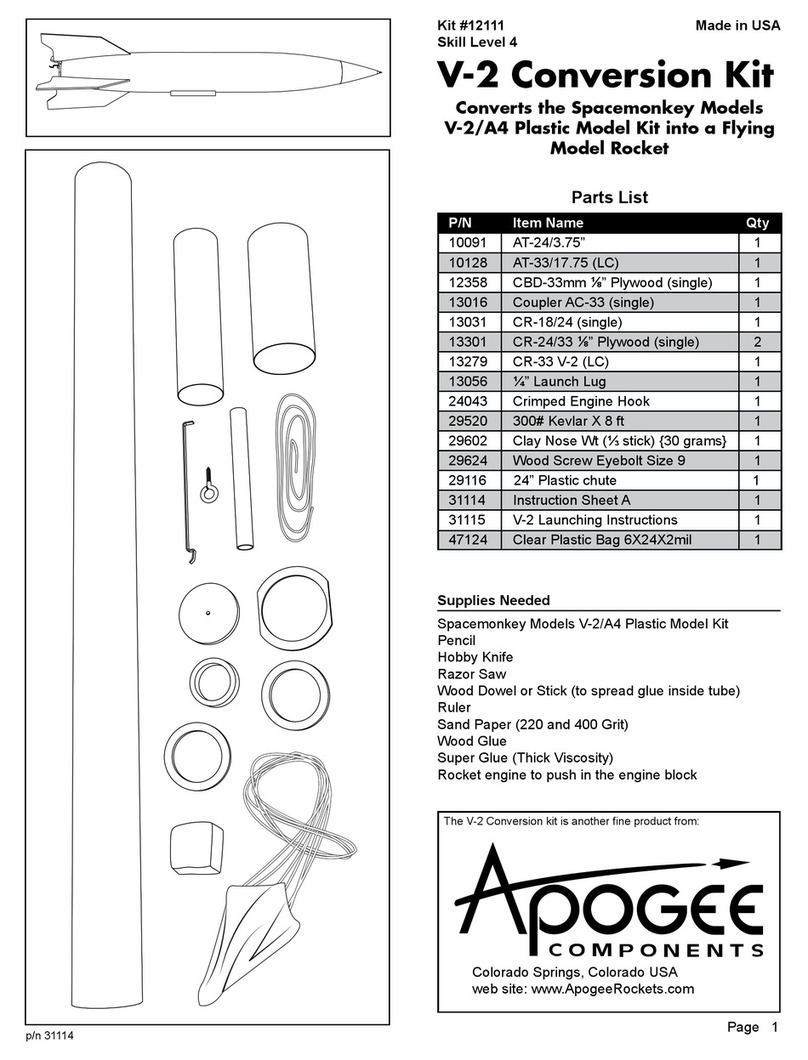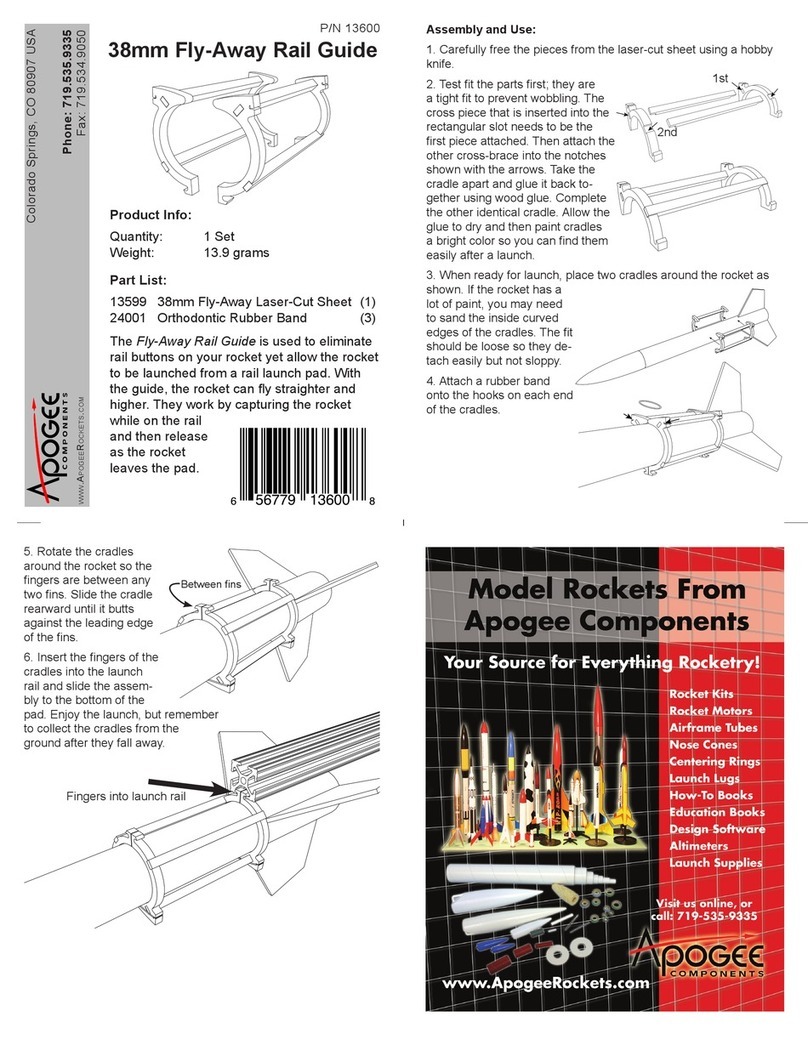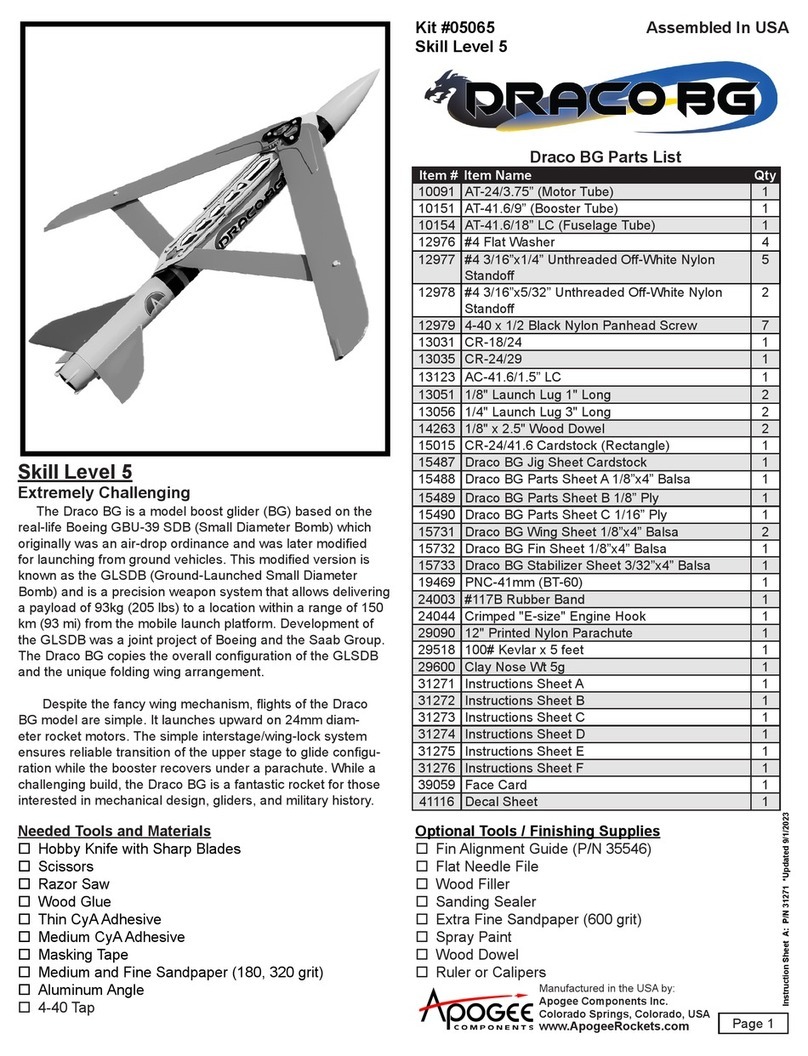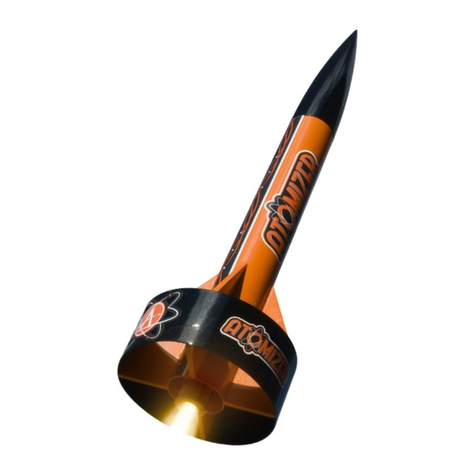
Step 2-12
Step 2-14
2-11. DO NOT GLUE - Slide the aft centering ring (ring F)
over all three motor tubes, and rotate the tubes so that
the engine hooks align with the notches in the aft ring,
and are all facing the same direction.
2-12. Rotate the latch assembly, so the latch is facing
away from you. Apply glue to the interior of the three
holes. Quickly install the front of the motor mount tubes
in the latch assembly centering ring, Press the tubes all
the way into the front centering ring and get the tubes as
square as possible.
2-13. Once the tubes are secure at the latch assembly,
apply glue at the 5/8" (16mm) marks of all tubes and slide
the aft centering ring into place.
2-14. Apply wood glue to the joints between the centering
rings and motor tubes, then form llets with a nger tip.
Allow the removable mount to dry entirely before install-
ing in a rocket.
Adjusting Mounts for Correct Fit
To adjust the t of the removable mount, the tabs may
need to be led down somewhat. This compensates for
slight inaccuracies in both the xed mount and remov-
able mounts. To test, insert the removable mount into the
rocket and rotate it until the tabs on the latch drop into
the slots in the xed mount. Rotate the removable mount
clockwise to latch. If the removable mount refuses to
rotate or is overly stiff, take the mount out and use a at
needle le to remove material from the aft side of each
of the tabs (as shown here with the 3x24mm mount).
Repeat this process of testing and removing material until
the mount rotates and latches without binding
Remove materials
from backside of tabs
Slide centering ring
into position
5/8”
(16mm)
Step 2-13
Slide centering ring
into position
5/8"
16mm
Page 10
*Quick Draw Suggested Motor Charts*Quick Draw Suggested Motor Charts
1x29mm Motor Mount:1x29mm Motor Mount:
Manufac-
turer
Engine
Loaded Motor Type Est. Altitude
Ft m
Estes E16-4 Single Use 548 167
Cesaroni F36SS-6 Reloadable 792 241
AeroTech F27R-4 Single Use 1008 307
Cesaroni F31CL-6 Reloadable 1075 328
AeroTech F25W-6 Single Use 1538 469
Cesaroni G88SS-8 Reloadable 1695 517
AeroTech G25W-6 Reloadable 2551 778
Manufac-
turer
Engine
Loaded Motor Type Est. Altitude
Ft m
Estes 2 x E16-4 Single Use 1186 362
Cesaroni 2 x F36SS-8 Reloadable 1601 488
Estes 2 x F15-6 Single Use 1952 595
Cesaroni 2 x F29IM-8 Reloadable 2101 641
AeroTech 2 x F25W-9 Single Use 2734 834
2x29mm Motor Mount (Sold Separately):2x29mm Motor Mount (Sold Separately):
Step 2-11 Ring F
Manufac-
turer
Engine
Loaded Motor Type Est. Altitude
Ft m
Estes 3 x C11-5 Single Use 390 119
Estes 3 x D12-5 Single Use 965 294
Quest 3 x D22W-7 Single Use 1177 359
Estes 3 x E12-6 Single Use 1613 492
3x24mm Motor Mount:3x24mm Motor Mount:
